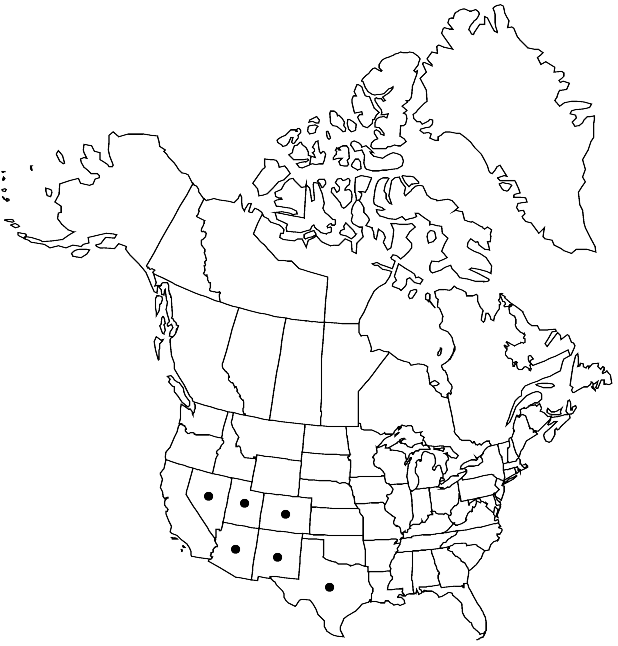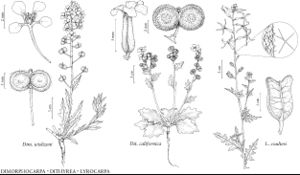Dimorphocarpa wislizeni
Publ. Bussey Inst. Harvard Univ. 1979: 24. 1979.
Annuals. Stems unbranched or branched basally, branched distally, (1–) 2–6 (–8) dm. Basal leaves: petiole 1–4 (–5) cm; blade lanceolate to linear-lanceolate, (2–) 3–7 (–10) cm × 4–15 (–20) mm, base cuneate to attenuate, margins pinnately lobed to coarsely dentate. Cauline leaves: (proximalmost) petiole 1–4 (–5) cm, (distalmost) shortly petiolate or subsessile; blade linear to narrowly lanceolate, base cuneate, margins usually entire, rarely dentate, or repand. Fruiting pedicels divaricate to slightly reflexed, (6–) 8–14 (–22) mm. Flowers: sepals (2.5–) 3–4 × 1–1.5 mm, pubescent abaxially; petals white or lavender, 4–7 (–8) × (2.5–) 3–4 (–5) mm, attenuate to claw, claw 1–1.5 mm, expanded basally; filaments white, 2–3.5 mm; anthers 0.7–1 mm. Fruits: each valve usually transversely ovoid-oblong, rarely suborbicular, 4–5.5 (–6) × (4–) 5–7 (–7.5) mm (often longer than wide), base slightly rounded, apex truncate, with or without narrow wing beyond indurated part surrounding seeds, glabrous or pubescent; style 0.5–1 (–1.2) mm. Seeds suborbicular-ovoid, 2–3 × 1.5–2 mm. 2n = 18.
Phenology: Flowering Feb–Oct.
Habitat: Sandy roadsides, sandstone knolls, sand hills and dunes, sandy streambeds and dry washes, desert flats
Elevation: 1000-2200 m
Distribution

Ariz., Colo., Nev., N.Mex., Tex., Utah, Mexico (Chihuahua), Mexico (Coahuila)
Discussion
Selected References
None.
Lower Taxa
"broader than long" is not a number."elongated" is not a number."thick" is not a number."dm" is not declared as a valid unit of measurement for this property."dm" is not declared as a valid unit of measurement for this property.
